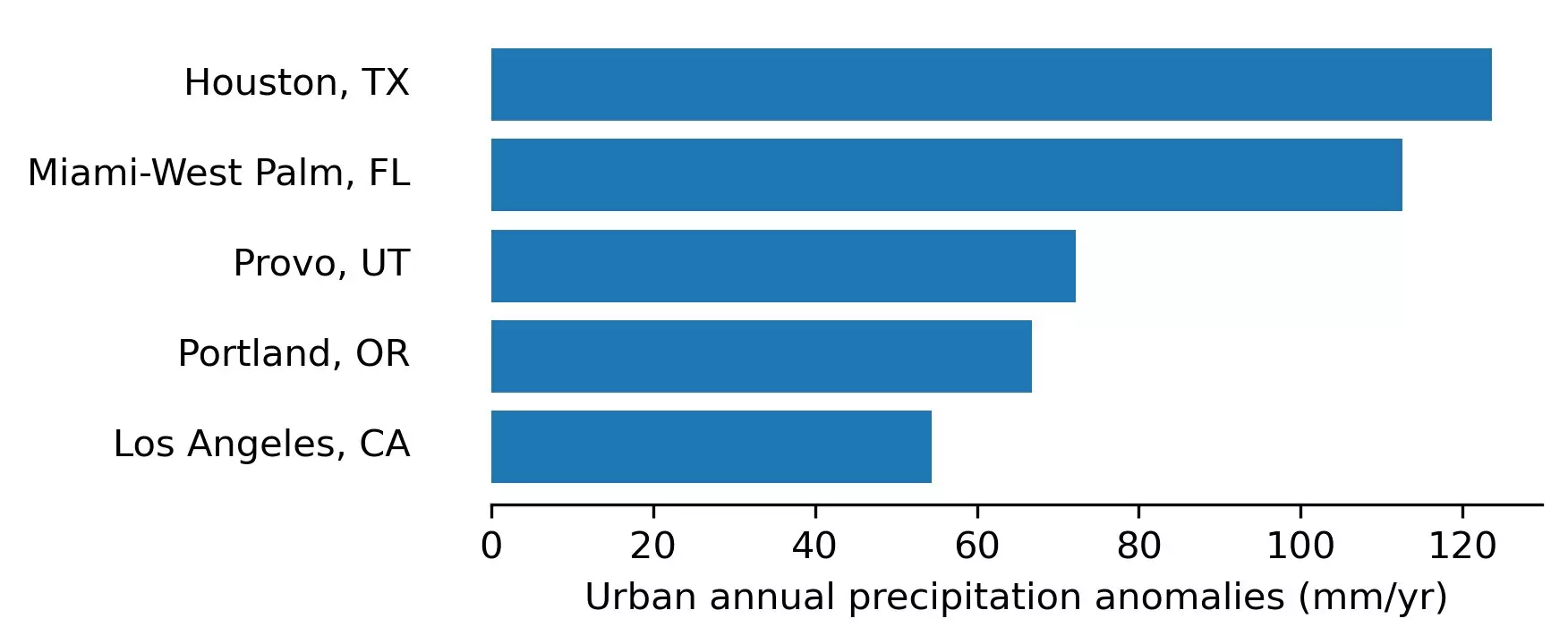Urbanization is a powerful force that significantly reshapes natural ecosystems, contributing to a variety of environmental changes. One of these is the well-documented urban heat island effect, where city environments become markedly warmer than their rural surroundings. However, a less recognized but equally critical phenomenon is the urban precipitation anomaly—where urbanization impacts local rainfall patterns. Recent research has illuminated how urban development both enhances and modifies precipitation levels within metropolitan areas, leading to urgent implications for urban planning and sustainability.
The urban precipitation anomaly suggests that cities do not just differ in temperature; they also experience changes in precipitation patterns. A comprehensive study conducted by researchers at The University of Texas at Austin analyzed data from 1,056 cities worldwide, discovering that over 60% of these urban areas receive more rainfall than nearby rural locales. This presents a surprising twist in our understanding of city climates, revealing that urbanization can work as a mechanism to increase local precipitation. For instance, the findings indicated that Houston experiences, on average, almost an additional five inches of rainfall each year compared to its rural counterparts. This uptick in urban precipitation carries a suite of implications that urban planners and residents need to consider seriously.
The relationship between urban structure and its precipitation anomalies can be likened to the behavior of a sponge. As Professor Dev Niyogi of The Jackson School of Geosciences elucidates, urban areas can gather precipitation from surrounding areas and intensify its distribution within city limits. High-rise buildings and densely constructed environments facilitate this concentration effect by obstructing air circulation. These vertical structures contribute to the upward movement of air, enhancing conditions conducive to rainfall.
Moreover, researchers noted that urban areas in hotter and more humid climates exhibit greater precipitation anomalies than those in cooler climates. This highlights the need for climate-specific assessments when developing urban infrastructures.
Interestingly, not all urban settings experience increased rainfall. Cities located in basins or lowland areas can receive less precipitation due to geography and prevailing weather patterns that are influenced by nearby mountain ranges. During the study, cities such as Seattle and Jakarta were identified as examples where urban structures might hinder rainfall accumulation rather than promote it. This understanding helps illustrate that urbanization’s effects on precipitation are not uniform; they depend heavily on geographic and climatic contexts.
The Role of Population Density
The correlation between population density and precipitation anomalies is especially noteworthy. Research indicates that as urban populations grow, the density and complexity of construction increase, resulting in intensified heat retention and greenhouse gas emissions. Each of these factors contributes to elevated temperatures that can enhance localized precipitation. Thus, urbanization does not merely add to the built environment—it interacts dynamically with atmospheric conditions to shape rainfall patterns.
Implications for Urban Planning
As the study reveals, the projected increase in city-level precipitation exacerbates flash flooding risks, particularly when combined with impervious surfaces that characterize urban landscapes. Areas with extensive pavements and buildings prevent water absorption into the ground, leading to rapid surface runoff during heavy rains. This combination of increased rainfall and reduced absorption capacity creates a daunting challenge for urban planners. The findings call for immediate attention to develop sustainable infrastructure, such as green roofs, porous pavements, and enhanced drainage systems, which can help mitigate flooding risks and manage stormwater more effectively.
As our climate continues to change, understanding urbanization’s impact on rainfall becomes ever more critical. The urban precipitation anomaly presents both opportunities and challenges for city planners, policymakers, and residents alike. Ensuring that our cities can handle the intensified rainfall demands innovative strategies and collaborative efforts. By acknowledging and addressing these climate-induced changes, we can help secure a more resilient urban future for generations to come.
While urbanization brings growth and opportunity, it also comes with environmental challenges that warrant careful management. The data on precipitation anomalies serves as a crucial reminder that our cities require proactive adaptation to thrive within our ever-evolving climate landscape.


Leave a Reply